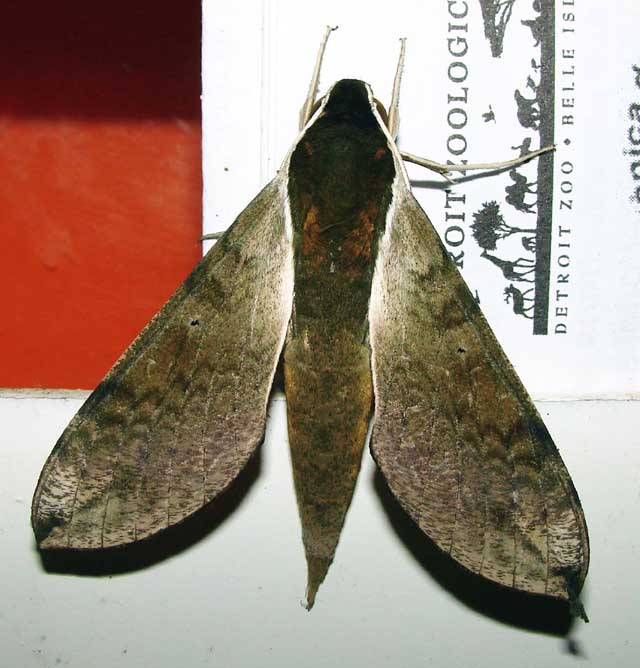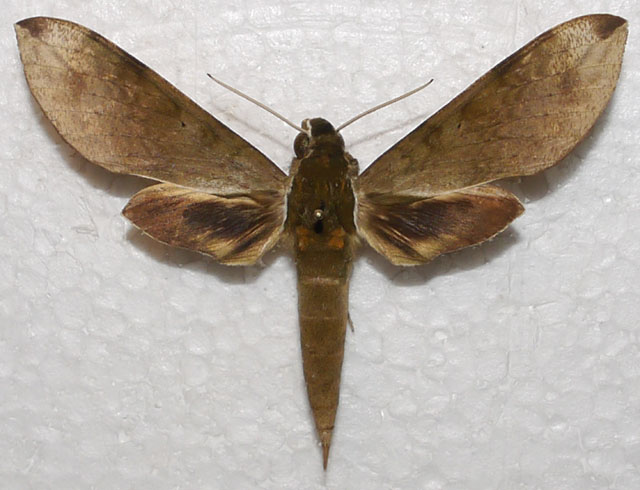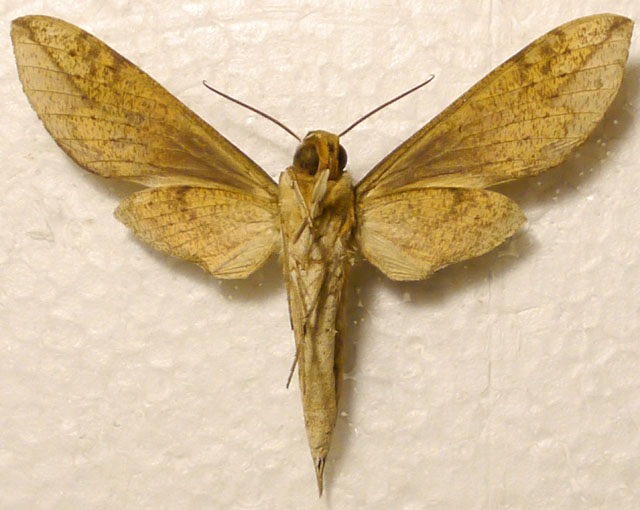Xylophanes schausi serenus
|
|
Updated as per
AN ANNOTATED CHECKLIST OF THE SPHINGIDAE OF BOLIVIA, October 2007
Updated as per personal comunication with Shirley Sekarajasingham (Loreto, Peru, September 25, 2008); October 5, 2012
Updated as per personal communication with Vadim Kroutov (male: 78mm; Ucayali, Peru); February 22, 2015
|
Xylophanes schausi serenus
Rothschild & Jordan, 1910

Xylophanes schausi serenus, Loreto, Peru,
September 25, 2012, courtesy of Shirley Sekarajasingham,
id by Bill Oehlke.
This site has been created by
Bill Oehlke at oehlkew@islandtelecom.com
Comments, suggestions and/or additional information are welcomed by Bill.
TAXONOMY:
Family: Sphingidae, Latreille, 1802
Subfamily: Macroglossinae, Harris, 1839
Tribe: Macroglossini, Harris, 1839
Genus: Xylophanes Hubner [1819] ...........
Species: schausi serenus Rothschild & Jordan, 1910
|
MIDI MUSIC
.....It's a Wonderful World.....
copyright C. Odenkirk
ON.OFF
<bgsound src="world.mid" LOOP=FOREVER>
|
DISTRIBUTION:
Xylophanes schausi serenus (wingspan: males: 78mm (VK); females: probably larger)
fly in
Brazil (specimen type locality);
Peru: Loreto (SS); Ucayali (VK) and
Bolivia: Cochabamba, Santa Cruz, Beni.
I believe the specimens from Venezuela are now also recognized as subspecies serenus.

Xylophanes schausi serenus male, 78mm, Ucayali, Peru,
courtesy of Vadim Kroutov

Xylophanes schausi serenus male (verso), 78mm, Ucayali, Peru,
courtesy of Vadim Kroutov
"Identical to Xylophanes schausi schausi except that the olive-green submarginal patch between M1 and M3 on the forewing upperside is only very slightly
indicated.
The diagnostic feature of this subspecies is also found in several specimens of
Xylophanes schausi schausi in BMNH from SE Brazil and other localities, and thus the validity of Xylophanes schausi serenus is questionable." CATE

Xylophanes schausi serenus male, Rio Madeira, Brazil, CATE,
on my home computer only.
FLIGHT TIMES:
Xylophanes schausi serenus adults fly in September and probably in other months.
ECLOSION:
Pupae probably wiggle to surface from subterranean chambers just prior to eclosion.
SCENTING AND MATING:Females call in the males with a pheromone released from a gland at the tip of the
abdomen.
EGGS, LARVAE, PUPAE:
Larvae probably feed on plants in the Rubiaceae family and Malvaceae families.
Moths emerge approximately one-two months after larvae pupate.
Use your browser "Back" button to return to the previous page.
Goto Main Sphingidae Index
Goto Macroglossini Tribe
Goto Central American Indices
Goto Carribean Islands
Goto South American Indices
Goto U.S.A. tables



